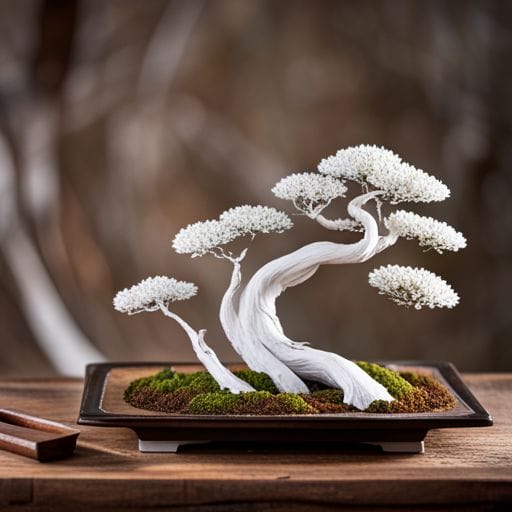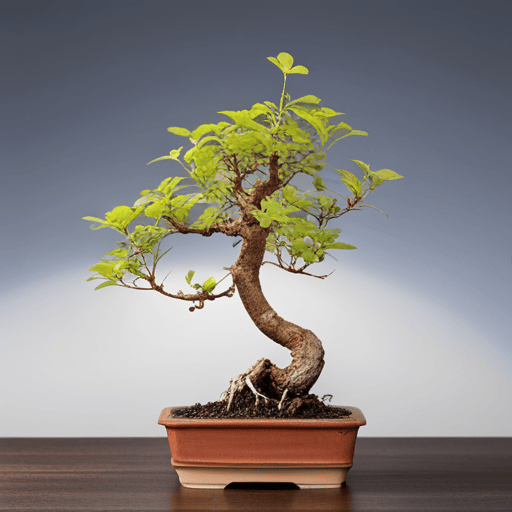Cottonwood bonsai trees can be a unique and fulfilling addition to any garden or bonsai collection. With their attractive foliage, stunning bark, and adaptability to various growing conditions, these trees offer a rewarding experience for bonsai enthusiasts.
This complete guide aims to provide a comprehensive overview of how to successfully grow cottonwood as bonsai, covering aspects such as the types of cottonwood suitable for bonsai, the requirements for their cultivation, and the necessary care techniques. By following these guidelines, individuals can embark on a journey of cultivating and nurturing these beautiful trees, ensuring their health and longevity.
Whether starting from seeds, young plants, or middle-aged trees, the process of bonsai cultivation requires attention to detail and a deep understanding of the specific needs of cottonwood trees. By adhering to the principles outlined in this guide, individuals can create stunning cottonwood bonsai trees that bring joy and serenity to their surroundings.
Contents
- 1 Quick Points
- 2 How to bonsai cottonwood?
- 3 Types of cottonwood for bonsai
- 4 Requirements for cottonwood bonsai
- 5 Frequently Asked Questions
- 5.1 Can cottonwood bonsai trees be grown indoors?
- 5.2 How long does it take for a cottonwood bonsai tree to reach its mature size?
- 5.3 Can cottonwood bonsai trees be shaped into specific forms, such as cascade or windswept?
- 5.4 What are the common pests and diseases that affect cottonwood bonsai trees?
- 5.5 Can cottonwood bonsai trees be propagated through cuttings instead of seeds?
Quick Points
- There are 7 identified species of cottonwood that can be grown as bonsai trees.
- Cottonwood bonsai trees require good direct sunlight and well-moisturized soil.
- Black Cottonwood bonsai trees have attractive gray bark but are hard to grow in bonsai pots due to their high growth speed and root system.
– Cottonwood bonsai trees have a weak root system and are prone to root rot, so pruning and re-potting should be done carefully.
How to bonsai cottonwood?

The process of bonsai-ing cottonwood trees involves several steps:
- Selecting healthy seeds or young plants.nn2. Providing well-drained and moisturized soil.nn3. Ensuring adequate sunlight.nn4. Carefully pruning and re-potting the trees to maintain their miniature structure.
Bonsai enthusiasts can start cottonwood bonsai trees from seeds by following these steps:
- Choose viable seeds.nn2. Plant them in loamy soil.nn3. Use a bonsai pot with good drainage and slightly more space for the roots.nn4. Ensure constant moisture in the soil, but avoid excessive moisture to prevent root rot.
To maintain the desired shape and size of the cottonwood bonsai trees, pruning and re-potting should be conducted with caution. It is also important to select appropriate pots and add suitable soil to the bonsai trees.
Lastly, pay attention to any potential issues with the plant by smelling the bonsai trees.
Types of cottonwood for bonsai

There are seven identified species of cottonwood that are suitable for cultivation as bonsai trees. Each species has its own unique characteristics and requirements. Here is a table summarizing the types of cottonwood for bonsai:
| Species Name | Growth Speed | Moisture Requirements | Bark Appearance |
|---|---|---|---|
| Eastern Cottonwood | High | Moisturized environments | Attractive and evergreen |
| Black Cottonwood | High | Moisturized environments | Gray and attractive |
| Fremonts Cottonwood | High | Well-moisturized soils | Stunning and beautiful |
| Other Species | Varies | Varies | Varies |
It is important to select a species that aligns with your preferences and the environment in which you plan to grow the bonsai tree. Each species may have specific care requirements, so it is crucial to research and understand the needs of your chosen cottonwood bonsai tree. By providing the necessary conditions and care, you can create a beautiful and thriving cottonwood bonsai tree.
Requirements for cottonwood bonsai

To successfully cultivate cottonwood bonsai trees, it is essential to meet their specific requirements. Here are the key factors to consider when growing cottonwood bonsai:
- Sunlight: Cottonwood bonsai trees thrive in direct sunlight. They should be placed in a location that receives at least six hours of sunlight each day.
- Moisture: Cottonwood trees naturally grow in moist areas, so it is crucial to provide them with adequate moisture. The soil should be well-moisturized but not excessively wet, as the bonsai’s weak root system is prone to root rot.
- Soil and Drainage: Good drainage soil is essential for cottonwood bonsai. Loamy soil with good drainage properties is recommended to prevent waterlogging. Additionally, the bonsai pot should have sufficient drainage holes to allow excess water to escape.
By fulfilling these requirements, cottonwood bonsai trees can thrive and bring the beauty of these magnificent trees into your garden or bonsai collection.
Frequently Asked Questions
Can cottonwood bonsai trees be grown indoors?
Cottonwood bonsai trees are best grown outdoors as they require direct sunlight and well-moisturized environments. Indoor conditions may not provide the necessary light and moisture levels, making it challenging to maintain the tree’s health and growth.
How long does it take for a cottonwood bonsai tree to reach its mature size?
The time it takes for a cottonwood bonsai tree to reach its mature size can vary depending on various factors such as the species, growing conditions, and care provided. It typically takes several years to develop a mature cottonwood bonsai tree.
Can cottonwood bonsai trees be shaped into specific forms, such as cascade or windswept?
Yes, cottonwood bonsai trees can be shaped into specific forms such as cascade or windswept. These forms can be achieved through careful pruning and wiring techniques, allowing the tree to mimic the natural growth patterns found in nature.
What are the common pests and diseases that affect cottonwood bonsai trees?
Common pests and diseases that affect cottonwood bonsai trees include aphids, scale insects, caterpillars, and fungal diseases such as powdery mildew and root rot. Regular inspection, proper watering, and timely treatment are essential for maintaining the health of cottonwood bonsai trees.
Can cottonwood bonsai trees be propagated through cuttings instead of seeds?
Cottonwood bonsai trees can be propagated through cuttings instead of seeds. Taking cuttings from healthy, mature trees and rooting them in a suitable rooting medium can result in successful propagation. This method allows for the reproduction of desired traits and can be an efficient way to grow cottonwood bonsai trees.




